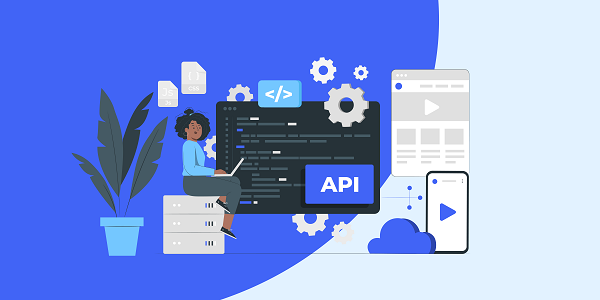Residential Proxies
Allowlisted 200M+ IPs from real ISP. Managed/obtained proxies via dashboard.

Proxies Services
Residential Proxies
Allowlisted 200M+ IPs from real ISP. Managed/obtained proxies via dashboard.
Residential (Socks5) Proxies
Over 200 million real IPs in 190+ locations,
Unlimited Residential Proxies
Unlimited use of IP and Traffic, AI Intelligent Rotating Residential Proxies
Static Residential proxies
Long-lasting dedicated proxy, non-rotating residential proxy
Dedicated Datacenter Proxies
Use stable, fast, and furious 700K+ datacenter IPs worldwide.
Mobile Proxies
Dive into a 10M+ ethically-sourced mobile lP pool with 160+ locations and 700+ ASNs.
Scrapers
Collection of public structured data from all websites
Proxies
Residential Proxies
Allowlisted 200M+ IPs from real ISP. Managed/obtained proxies via dashboard.
Starts from
$0.6/ GB
Residential (Socks5) Proxies
Over 200 million real IPs in 190+ locations,
Starts from
$0.03/ IP
Unlimited Residential Proxies
Unlimited use of IP and Traffic, AI Intelligent Rotating Residential Proxies
Starts from
$1816/ MONTH
Rotating ISP Proxies
ABCProxy's Rotating ISP Proxies guarantee long session time.
Starts from
$0.4/ GB
Static Residential proxies
Long-lasting dedicated proxy, non-rotating residential proxy
Starts from
$4.5/MONTH
Dedicated Datacenter Proxies
Use stable, fast, and furious 700K+ datacenter IPs worldwide.
Starts from
$4.5/MONTH
Mobile Proxies
Allowlisted 200M+ IPs from real ISP. Managed/obtained proxies via dashboard.
Starts from
$1.2/ GB
Scrapers
Web Unblocker
Simulate real user behavior to over-come anti-bot detection
Starts from
$1.2/GB
Serp API
Get real-time search engine data With SERP API
Starts from
$0.3/1K results
Video Downloader
Fully automated download of video and audio data.
Starts from
$0.07/GB
Scraping Browser
Scale scraping browsers with built-inunblocking and hosting
Starts from
$2.5/GB
Documentation
All features, parameters, and integration details, backed by code samples in every coding language.
TOOLS
Resources
Addons
ABCProxy Extension for Chrome
Free Chrome proxy manager extension that works with any proxy provider.
ABCProxy Extension for Firefox
Free Firefox proxy manager extension that works with any proxy provider.
Proxy Manager
Manage all proxies using APM interface
Proxy Checker
Free online proxy checker analyzing health, type, and country.
Proxies
AI Developmen
Acquire large-scale multimodal web data for machine learning
Sales & E-commerce
Collect pricing data on every product acrossthe web to get and maintain a competitive advantage
Threat Intelligence
Get real-time data and access multiple geo-locations around the world.
Copyright Infringement Monitoring
Find and gather all the evidence to stop copyright infringements.
Social Media for Marketing
Dominate your industry space on social media with smarter campaigns, anticipate the next big trends
Travel Fare Aggregation
Get real-time data and access multiple geo-locations around the world.
By Use Case
English
繁體中文
Русский
Indonesia
Português
Español
بالعربية


This article discusses in detail how to use Node.js for web crawling, including technical principles, implementation steps and application scenarios, to help readers understand how to use Node.js and proxy IP technology to efficiently complete data collection tasks.
1. What is Node.js web scraping?
Node.js web scraping refers to the process of extracting data from web pages using the Node.js platform and its rich libraries and tools. Node.js is a JavaScript-based runtime environment known for its efficient asynchronous I/O operations and lightweight architecture, making it ideal for handling high-concurrency network requests. Web scraping is often used in scenarios such as data collection, market analysis, and public opinion monitoring. As a professional proxy IP service provider, abcproxy can significantly improve the efficiency and success rate of data collection when used in conjunction with Node.js web scraping technology.
2. Technical principles of Node.js web scraping
The core of Node.js web crawling is to use its asynchronous characteristics and rich library support to achieve efficient network requests and data parsing. Its technical principles mainly include the following aspects:
Network request: Send a request to the target web page through the HTTP or HTTPS module to obtain the web page content.
Data parsing: Use HTML parsing libraries (such as Cheerio) to extract required data from web page content.
Asynchronous processing: Through event-driven and non-blocking I/O models, high concurrent requests can be achieved to improve crawling efficiency.
Proxy IP support: Combined with proxy IP technology, it can avoid IP blocking and ensure the continuity of crawling tasks.
3. Steps to implement Node.js web scraping
Implementing Node.js web scraping usually involves the following steps:
Environment setup: Install Node.js and required libraries, such as Axios, Cheerio, etc.
Send request: Use HTTP or Axios module to send a request to the target web page to obtain the web page content.
Parse the data: Use Cheerio or a similar library to parse the HTML content and extract the required data.
Store data: Save the extracted data to a local file or database for later analysis.
Proxy IP configuration: Combined with the proxy IP service provided by abcproxy, ensure the stability and anonymity of the crawling task.
4. Advantages of Node.js Web Scraping
Node.js web scraping has several significant advantages:
Efficiency: Based on the asynchronous I/O model, it can efficiently handle a large number of concurrent requests.
Flexibility: Rich library and tool support, able to flexibly respond to different crawling needs.
Ease of use: JavaScript is easy to learn, has a low development threshold, and is suitable for rapid development.
Scalability: Supports seamless integration with other technologies (such as proxy IP, database) to meet the needs of complex scenarios.
5. Application scenarios of Node.js web scraping
Node.js web scraping is widely used in many fields, mainly including the following aspects:
Data mining: Extracting structured data from web pages for market analysis or business decision making.
Public opinion monitoring: Capture the content of social media or news websites in real time and conduct public opinion analysis.
E-commerce: crawl competitors’ prices or product information to optimize pricing strategies.
Ad verification: Verify the accuracy and effectiveness of advertising and improve advertising effectiveness.
Website testing: simulate user access behavior to test the performance and stability of the website.
6. Tips to improve Node.js web crawling efficiency
To improve the efficiency of Node.js web crawling, you can adopt the following tips:
Concurrency control: Reasonably set the number of concurrent requests to avoid excessive pressure on the target server.
Proxy IP rotation: Use the proxy IP service provided by abcproxy to rotate IP addresses regularly to avoid being blocked.
Cache mechanism: cache repeatedly requested content to reduce unnecessary network requests.
Error handling: Improve the error handling mechanism to ensure that the crawling task can continue to execute under abnormal circumstances.
Distributed deployment: Distribute crawling tasks to multiple servers to further improve efficiency and stability.
Node.js web scraping is an efficient and flexible data collection technology that can be widely used in data collection, public opinion monitoring, e-commerce and other fields. By understanding its technical principles, implementation steps and application scenarios, users can build an efficient scraping system according to actual needs. As a professional proxy IP service provider, abcproxy provides a variety of high-quality proxy IP products, including residential proxies, data center proxies, static ISP proxies, Socks5 proxies, and unlimited residential proxies, which are suitable for a variety of application scenarios. If you are looking for a reliable proxy IP service, please visit the abcproxy official website for more details.
Featured Posts
Popular Products
Residential Proxies
Allowlisted 200M+ IPs from real ISP. Managed/obtained proxies via dashboard.
Residential (Socks5) Proxies
Over 200 million real IPs in 190+ locations,
Unlimited Residential Proxies
Use stable, fast, and furious 700K+ datacenter IPs worldwide.
Rotating ISP Proxies
ABCProxy's Rotating ISP Proxies guarantee long session time.
Residential (Socks5) Proxies
Long-lasting dedicated proxy, non-rotating residential proxy
Dedicated Datacenter Proxies
Use stable, fast, and furious 700K+ datacenter IPs worldwide.
Web Unblocker
View content as a real user with the help of ABC proxy's dynamic fingerprinting technology.
Related articles

Why do you need a dedicated proxy IP to buy shoes on SNKRS
This article analyzes the core role of dedicated proxy IP in SNKRS snap-ups, explores how to improve the success rate through proxy IP technology, and introduces how abcproxy provides professional solutions for sneaker enthusiasts.

How to search for Taobao products through pictures
This article analyzes the implementation logic of Taobao's image search technology, explores practical methods to improve search efficiency, and explains the application value of proxy IP services in e-commerce data collection, and recommends abcproxy professional proxy solutions.